Alienware 17 Gaming Notebook Review
by Dustin Sklavos on September 6, 2013 12:00 PM ESTWe're starting to get a bit more of a feel for how Haswell performs on the CPU side. The Intel Core i7-4800MQ powering the Alienware 17 is undoubtedly one of the fastest mobile quad core CPUs, but the more testing I see with it, the more I get a distinct sense that we need to start digging deeper into how it handles turbo. Performance is complicated further when we start hitting the GeForce GTX 780M as well; NVIDIA has implemented boost clocks on their mobile part, but the boost range seems to be a lot more variable than it is on the desktop, probably owing to the more specific thermal headroom.
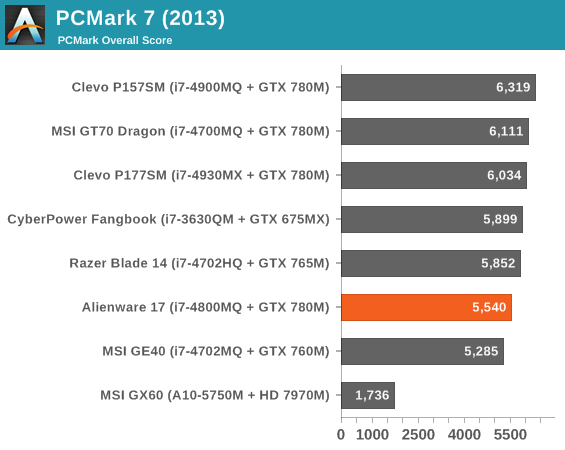

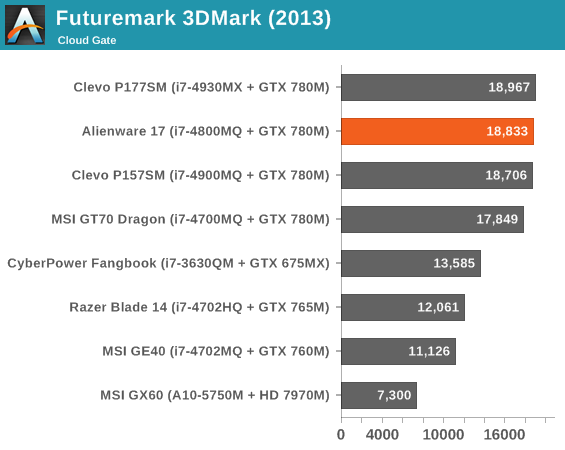
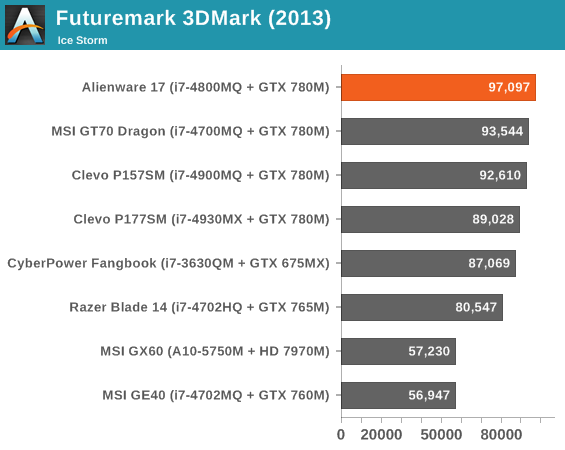
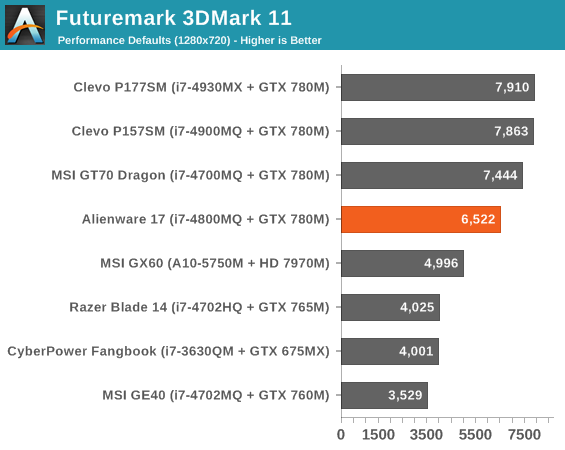
You can see we've got four different Haswell and 780M systems on hand, and the 3DMark scores are bouncing all over the place. I'd been expecting and hoping that the Alienware 17 would have the cleanest and most consistent implementation of this hardware pairing, but that doesn't seem to be the case. Instead we're all over the map. The 3DMark11 score is remarkably low compared to the other 780M systems, but it remains to be seen whether or not that performance deficit will resurface in practical game testing.
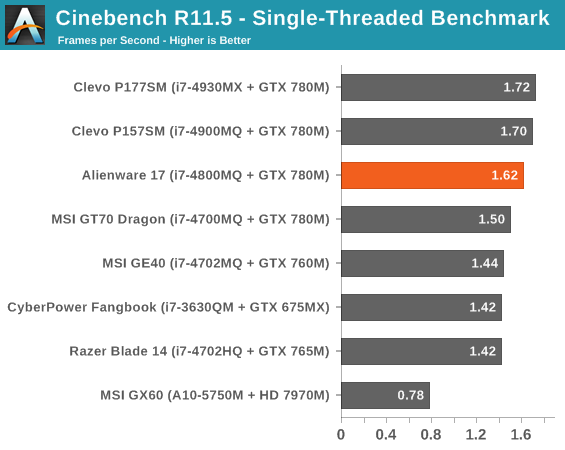


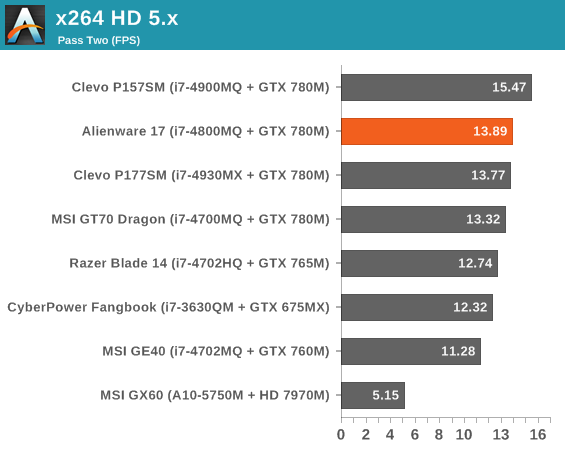
Cinebench is able to give us consistent results due, I think, to its more sustained load. Cinebench has historically been very consistent in the first place, so everything falls in where it ought to. But the x264 encoding benchmark is completely different.
We're essentially dealing with a lot of performance variables now. At first blush, Haswell seems to be more granular with its performance scaling than Ivy was. Mobile Kepler with boost is also very granular, but my experience with Kepler on the desktop is that its boost clocks are governed entirely by thermals. On the desktop, thermally-controlled turbo/boost speeds on hardware are easy to control for, but when you're talking about notebooks, you're at the mercy of the cooling systems implemented by the manufacturer, including the fan profiles.










45 Comments
View All Comments
arthur449 - Friday, September 6, 2013 - link
Based on these comments, I feel it would be a good idea for AnandTech write an article describing the current state of notebook gaming PCs.Is performance closer than it has been in the past to desktop parts? Price?
Apart from Optimus and Enduro, are there any recent software or hardware trends that may change this in the future?
inighthawki - Saturday, September 7, 2013 - link
Thanks so much!Pneumothorax - Friday, September 6, 2013 - link
Anyone else underwhelmed by Haswell with the exception of ULT version? Sad thing is we're stuck with this generation till 2015....andykins - Friday, September 6, 2013 - link
Only the ULV SKUs, or 40 EU graphic SKUs (with or without Crystallwell) are any improvement over last gen.JarredWalton - Friday, September 6, 2013 - link
Power/battery life is almost universally better on laptops, as long as we're not looking at full blown gaming laptops like the Alienware 17, Clevos, etc. The MSI GE40 for instance posts some pretty awesome battery life results.warezme - Friday, September 6, 2013 - link
I would label it disappointing. The redesign looks like a compromise in quality over the previous generation in an attempt to increase profits. The screen a TN panel, while matte is good, the lack of glass insert that went over the entire surface was classier even if more reflective. The missing control panel on top, also a cut in cost by eliminating extra buttons and and an extra controller, the integrated battery slot, etc. It looks cheaper without the benefit of a lower price.ilkhan - Friday, September 6, 2013 - link
Any chance of a GTX770M notebook review? This is the 3rd or 4th GTX780M review but nothing down-market.Relaxe - Friday, September 6, 2013 - link
M. Sklavos,I have an Alienware M17xR3 since early 2012. At first, I had some troubles with games being "choppy"... investigations made it clear that the GPU and CPU hit the thermal derating ceiling very fast....
Please, consider integrating OCCT from OCBase in your testings. This test demonstrated very clearly how thermally limited my Alienware was.
After this, I repasted the GPU and CPU with a cheap but well revied thermal paste... and now I do not hit the thermal limits at all (even at full load).
I am still baffled by Dell putting such a low-grade paste in such a premium product...
Maybe this has something to do with the inconsistent result you had.
Also, It would be nice to have a thermal picture of the bottom of the laptop under load.
Khenglish - Friday, September 6, 2013 - link
I wish clevo and AW would pay more attention to battery life. With optimus there is really no reason for a gaming laptop to have significantly worse battery life than GPUless laptops. The MSI GE40 with just a 65Wh AND a dGPU is incredible compared to clevo/AW.landsome - Saturday, September 7, 2013 - link
No reason except for significantly larger screen, larger and often better equipped mobo, sometimes dual hdd's of which one mechanical, typically a bit more power-hungry CPU, more mem, an optical as well - these things end adding up.